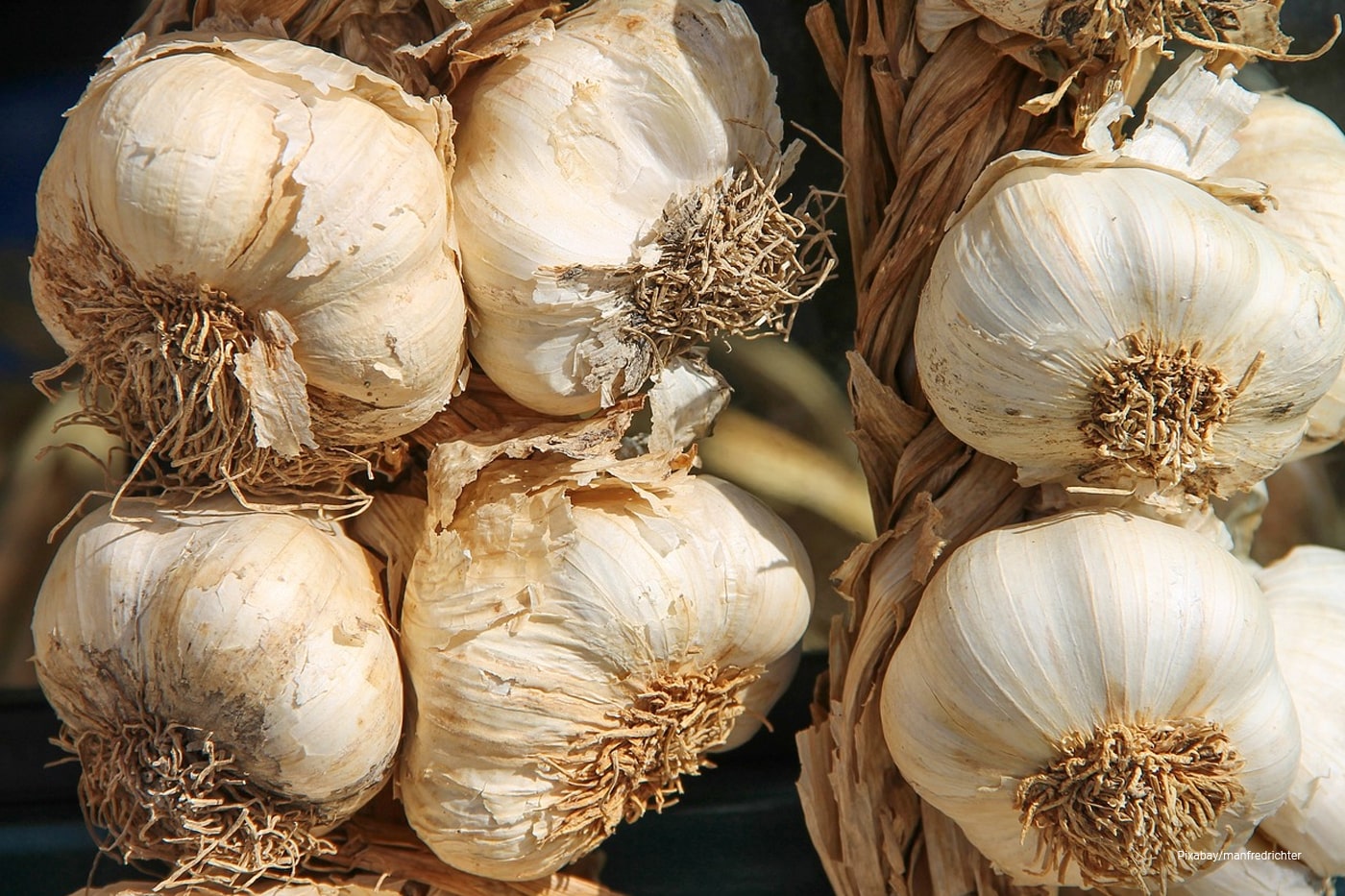Looking for gardening tips on garlic harvesting? Harvesting garlic can be tricky because the timing has to be just right. Since the bulbs are buried deep in the soil, there is no way of telling if the garlic is ripe for the picking! So how do you know if the garlic is ready for harvesting? It's easy, just check the leaves!
Contents []
Checking the Garlic Leaves

Each garlic leaf stems from a protective layer that wraps the garlic bulb. If a single garlic plant has 12 leaves, it has 12 layers of bulb wrapping underneath the ground. Garlic has no standard number of leaves so you have to check the leaves yourself.
If one-half to two-thirds of the garlic leaves have died off and the rest are still green, the garlic should be ready for harvesting. When the leaves start dying off, stop watering the garlic plants for at least a week. This will help dry out the soil and prevent rot from setting in.
The size of the leaves is a great indicator of the garlic's readiness for harvest. If the leaves are large enough, the garlic bulbs should be ready for harvest. If the leaves are not fully grown yet, you have to wait a little more. Don’t wait too long because harvesting once all the leaves have turned brown will yield inedible bulbs!
When all the garlic leaves have turned brown, the wrappers will separate, exposing the bulb to the elements. Over-ripened garlic bulbs have the tendency to form shoots from each clove. These are still usable but they are not as good as ripened garlic bulbs.
Checking the Garlic Bulbs
Apart from checking the leaves, you can also check the actual garlic bulb for signs that it is ripe for the picking. Just dig the soil around the bulb gently, avoiding the delicate wrapping or garlic cloves, and then look at the bulb's size.
If the garlic bulb looks large, the cloves are well formed, and the wrappers are nice and tight, it's ready for harvesting. On the other hand, if the garlic bulb looks tiny, it needs more time to grow so cover the exposed bulb with soil and wait for several days to check again.
Gardening Tips for Harvesting Garlic Bulbs
There is more to harvesting garlic bulbs than simply pulling the plants from the soil. Don't handle the garlic plants too roughly! Here are practical gardening tips for harvesting garlic bulbs:
Dig the Bulbs Out

Do not pull at the garlic plants because this will only break the leaves. Instead, dig the bulb out gently. Once the bulb is exposed, hold the base of the stem then pull the plant out. Brush off excess dirt and you’re done. Never peel the wrappings off nor rinse the bulbs with water. Rinsing the garlic with water could cause mold growth and rot.
Avoid Bruising
Freshly harvested garlic bulbs are prone to bruising. When digging out the bulbs, make sure the tool you are using is not hitting the embedded bulb. Also, lift the bulb from the ground one by one. Place the freshly dug garlic bulbs in a dry container and handle the container with care after harvesting.
For damaged or bruised garlic bulbs, these are still usable but they must be eaten first. The shelf life of damaged garlic is much shorter than blemish-free garlic. Also, the flavor won’t be as potent if you waited too long before using the bruised garlic.
Avoid Sun Exposure
Garlic bulbs are quite sensitive to heat exposure so get the bulbs out of the sun as soon as you are done harvesting. If you don’t, the garlic bulbs could blanch and burn from the heat.
Just store the freshly harvested, unwashed garlic bulbs in a cool place away from direct sunlight. Leave the roots and leaves untouched if you are planning to store the garlic bulbs for long-term.
If you are planning to cook with the freshly dug garlic bulbs right away, just brush the excess dirt, peel off a layer of the dirty wrapping and use a pair of scissors to trim the leaves and roots. Now the garlic is ready to be added to your favorite recipes!
Looking for more gardening tips? Enjoy amazing discounts on selected gardening items and helpful resources by signing up for our newsletter.



